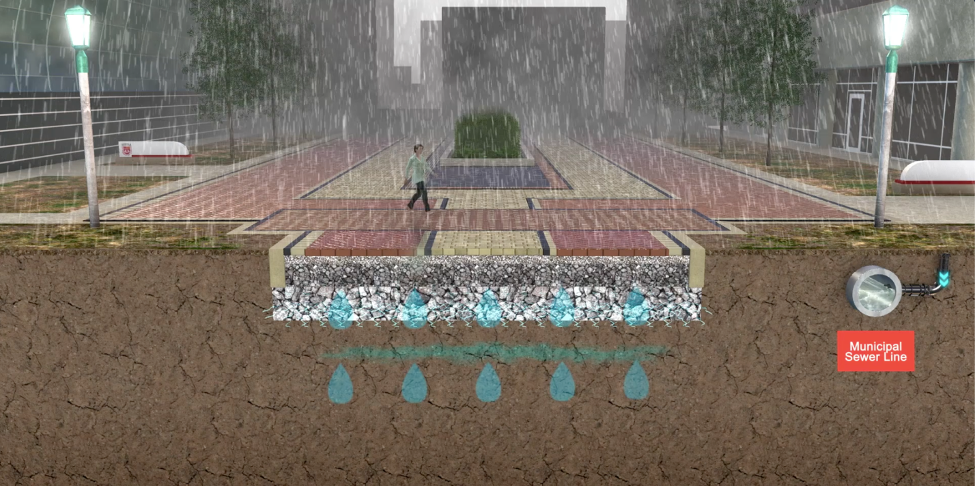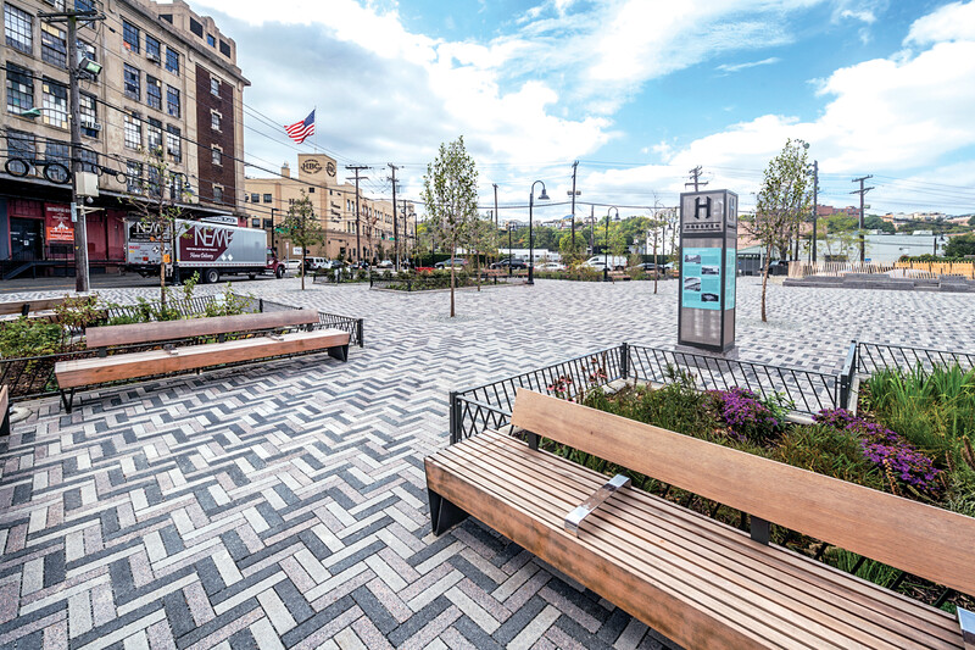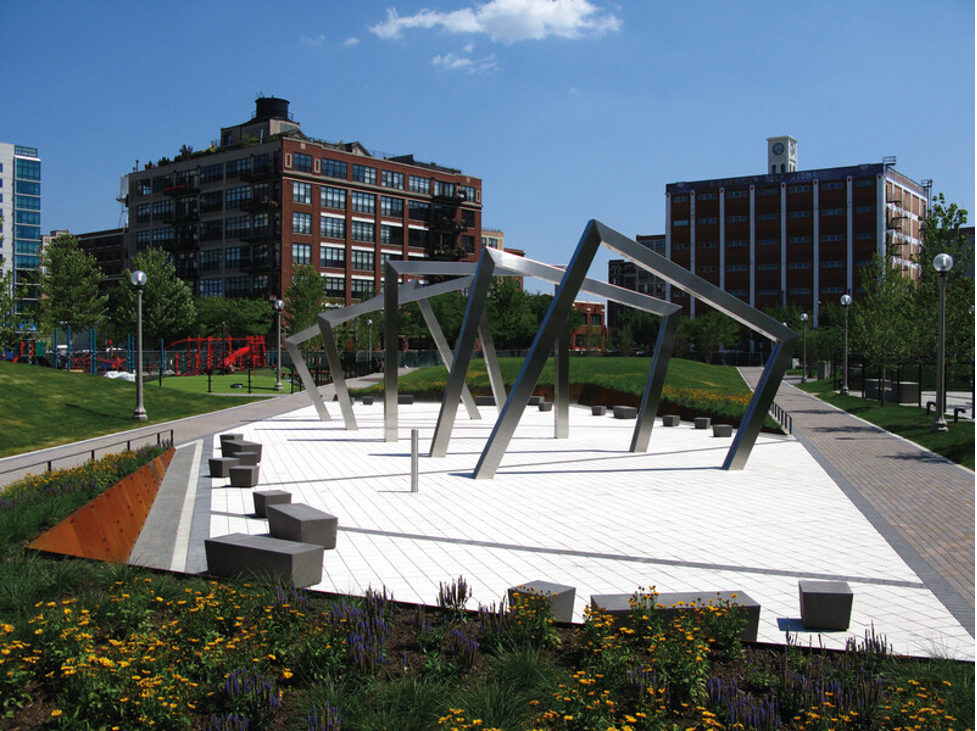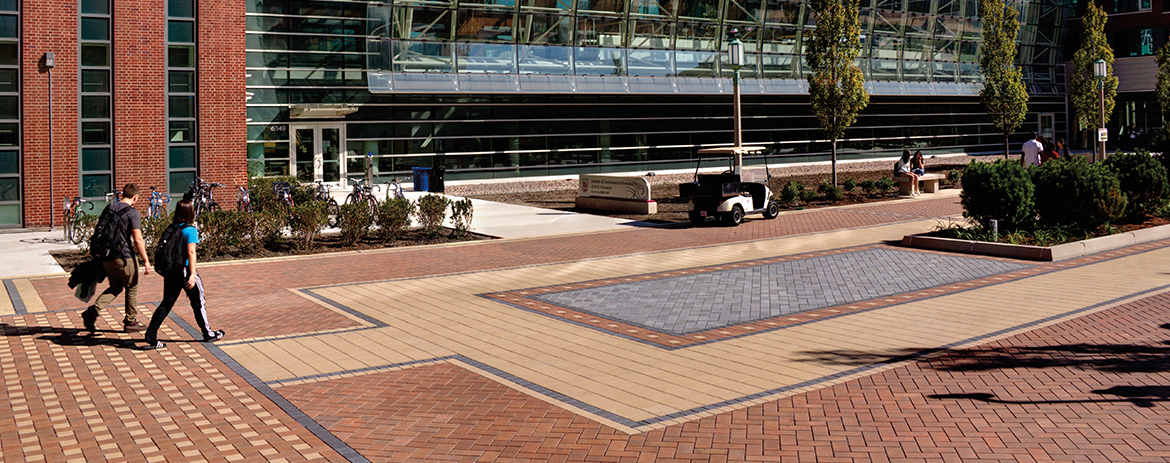As the world’s population steadily increases, plots of forestry and natural land have slowly been converted into urban spaces. While this is tackling the housing issue, the shift has created a new problem. Poured-in-place concrete and asphalt that are used in development are impervious surfaces that in the event of a flood or heavy rainfall, force stormwater runoff to flow back into storm drains. In turn, the water travels through sewer systems, many of them combined sewer systems, carrying heavy metals, bacteria and other pollutants before ending up back in our local rivers, lakes and streams. Additionally, these surfaces heat the water runoff and warm the local waters, compounding the negative effect.
In order to mitigate future damage caused by the impacts of climate change and urban sprawl, resilient landscape planning offers a chance for communities to be able to adapt and retrofit outdoor spaces. Permeable pavement is one such example of this, and has been shown to carry significant benefits of eliminating the amount of excess stormwater and pollutants that are carried back into our waters. Rainwater infiltration is extremely important to groundwater supply, which is why permeable paving has become an ecologically friendly alternative to impervious surfaces.
In 1991, Unilock introduced the first permeable paver to North America, in an effort to help alleviate future ecological and human health risks associated with the changing climate. Unilock permeable pavers are designed with special spacer bars, to allow water to flow between the joints of the paver and be absorbed by the subsoil, rather than running off the surface into storm drains, effectively giving water back to its natural environment. Additional environmental benefits include reducing puddling and ice buildup on surfaces. Permeable pavers are a popular choice for both residential and commercial developments, and are available is a wide range of sizes and styles, from historic to contemporary.

Permeable pavers are laid on an open-graded base of material suited for the application, including a setting bed for the pavers consisting of angular aggregate, typically ASTM No. 8 stone or similar size. Crushed, angular aggregate or granite (ASTM No. 8, 89 or 9) is swept into the joints of the pavers. This will help prevent pavers from shifting under the pressure of vehicles and pedestrian loads while allowing the water to freely flow back to the subsoil.
Rainwater collection systems, bioswales and rain gardens are examples of elements that can also be integrated into the permeable paver project to capture or supply water for vegetation or for other water uses.

Unilock offers the widest selection of permeable pavers in North America that will help bring charm and curb appeal to an outdoor project. Projects like the Brooklyn Naval Yards, Mary Bartelme Park, Hoboken Southwest Park and Fulton Pocket Park have created permeable spaces to alleviate any future stormwater management concerns while still being beautiful gathering and event spaces. If you wish to learn more about our extensive line of permeable paver products, a Unilock representative can assist you.



